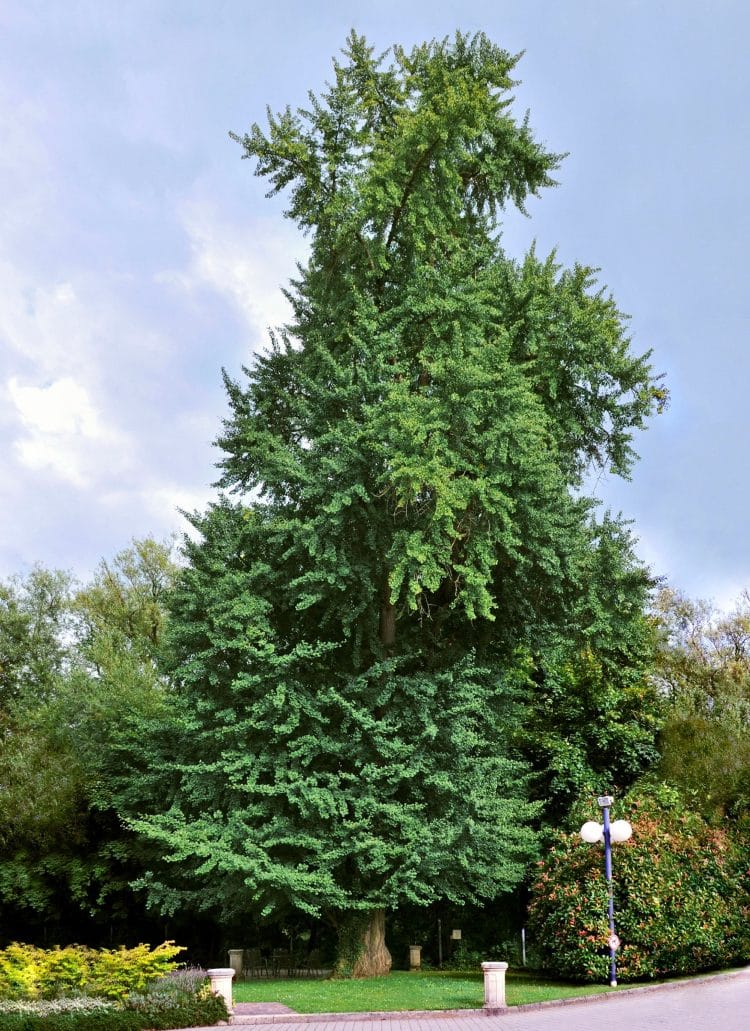Having been around for 250 million years, Ginkgo biloba L. has become synonymous with wellness and the mystic powers of Asian natural medicine. Gingo biloba’s therapeutic potential spans anti-tumor, anti-oxidant, antibacterial, anti-inflammatory, anti-depressant, immunostimulating, and hepatoprotective effects, in addition to use for the treatment of ischemia/reperfusion (I/R) injury, retinal diseases, and neurodegenerative diseases. [1]
Ginkgo Biloba Nutraceutical Potential
Ginkgo biloba consists of terpenes, flavonoids, fatty acids, proanthocyanidins, and polysaccharides, and the latter have been becoming increasingly popular in the scientific community. Methods of extracting polysaccharides were recently explored and respectively overviewed [1]
Researchers describe various methods, namely “high-performance ion chromatography, high-performance liquid chromatography (HPLC), gas chromatography (GC), UV–visible spectroscopy, fourier transform infrared spectra (IR), nuclear magnetic resonance spectroscopy (NMR) and X-ray photoelectron spectra.”
Extraction Methods
The juxtaposition of reviewed studies focused on different methods for extracting polysaccharides from variations of the source material and how conditions can be modified for optimal results.
The extraction rate of polysaccharides is determined by a combination of factors, such as solvent, pH, the raw material-to-solvent ratio, temperature, and time.
One method that has been applied to increase extraction rate has been to break cell walls and promote dissolution of the composition via techniques like ultrasonic-assisted enzymatic extraction.
“These methods possess the advantage of being highly efficient, environmentally friendly, and easily operated owing to the relatively mild reaction conditions.”
Extraction Process Optimization
To optimize extraction yield of polysaccharides from G. biloba leaves, a study, cited in the review, employed an orthogonal experiment, in which the water-to-sample ratio was 30:1 (v/w), at 80 °C for 3.5 h. [1,35].
Moreover, an ultrasonic-assisted enzymatic extraction has also been investigated [1,38] to obtain the antioxidant polysaccharides from G. biloba sarcotesta. The optimal conditions were a pH of 4.5, an extraction temperature of 60 °C, an extraction time of 31 min, and a cellulase concentration of 3.2%.
Conversely, in a study [1,37] on polyethylene glycol (PEG)-based ultrasound-assisted enzymatic extraction, the optimal conditions were a pH of 4.34, an extraction temperature of 51.88 °C and an extraction time of 37.13 min.
“In short, different extraction methods cause differences in monosaccharide composition, molar ratio, and activities.”
References:
- Fang et al, Extraction, structure and bioactivities of the polysaccharides from Ginkgo biloba: A review, International Journal of Biological Macromolecules, Volume 162, 1 November 2020, Pages 1897, Journal Impact Factor = 5.162; Times Cited = 6
Image Credits: Wikimedia Commons











